A paddle we find comfortable can enrich our paddling experience enormously… but because we can adjust to just about any close-enough length of canoe paddle, and because we tend to grow to love what we know… preferences vary enormously… so nothing really beats trying lots of paddles, and trying different lengths with a genuinely open mind - but we can generally get into the right ballpark even on dry land!
A PADDLE WE FIND COMFORTABLE
We don't need to get obsessive about paddle length, and our style will end up evolving to suit our paddle - so if a paddle is going to feel right for us, it just needs to work with our idea of comfortable.
If in doubt, just get comfortable with a grip which is wider than shoulder-width but no wider than we’d want to do an old fashioned chin-up or press-up…
Then add enough "extra" shaft length below our bottom hand to get the blade completely in the water (and no more) at the start of each forward stroke.
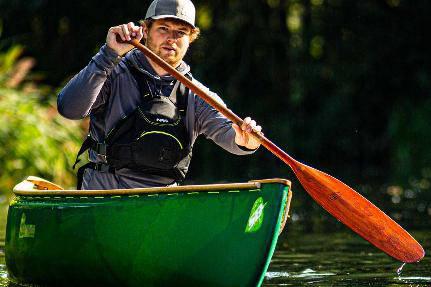
Do we all have the same reach as we wind up for each stroke? Of course not - and if we switch from sitting to kneeling, our reach is likely to extend further - which is why bent shaft paddles (typically used from seated) tend to be slightly shorter than straight shaft paddles (often used from a kneeling stance).
Paddles work most effectively if our blade can be fully submerged when we are applying power. Applying power earlier sucks air into the water down the back of the blade. If we are paddling with our lower hand above the water, our paddle shaft needs to be significantly greater than our grip width.
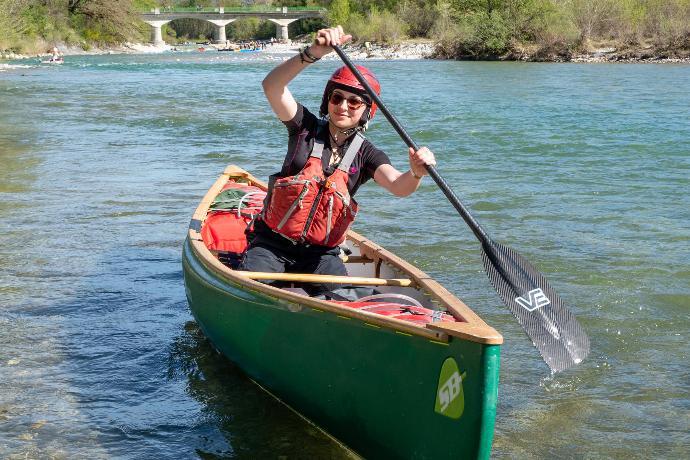
A BLADE AND BALANCE WE LIKE
Entry level paddle-blades tend to be large (maybe 775-840cm² / 120-130 square inches) as large blades help novices to get a good grip on the water.
As we move up through mid-level paddles, we typically find more variations in blade size, and more blade areas in the 515-546cm² / 80-100 square inch range (highly efficient at higher stroke-rates).
Classic "animal tail" paddles {Otter-tails, Beaver-tails, etc.) will be longer than the equivalent "modern" blade. Paddles for the same paddler may therefore be quite significantly different lengths overall (by ~ 4-6" / 100-150mm).
Some manufacturers choose to increase paddle blade area as well as shaft length when offering a longer paddle, which could, in principle, retain the balance across the range. Others keep the blade length the same, such that shorter paddles end up more blade heavy. Custom paddles allow customer choice!
If we tend to swap between kneeling and sitting, we might go on the short side if we’re mostly going to be sitting down and cruising along (as we tend to rotate less) but perhaps on the long side if we’re mostly going to be kneeling (as we tend to have a greater reach).
SIZING FOR A SMALLER CANOEIST?
Does anything need to change if we’re sizing a paddle for a youngster?
Well, our younger-paddler's most comfortable grip on a short, lightweight paddle might be a mere 19” / 48cm… but if that youngster is struggling with a heavy blade, the narrowest sustainable grip might be 21” / 53cm.
Adjusting for smaller paddlers can be especially important in a canoe sized for a larger adult. Our smallest younger paddlers might struggle to get their bottom hands out over the side of the boat and close to the water.
If we can't get out bottom hand below the gunwale, the paddle shaft ought to be longer… but the blade weight is then at the end of an even longer lever.
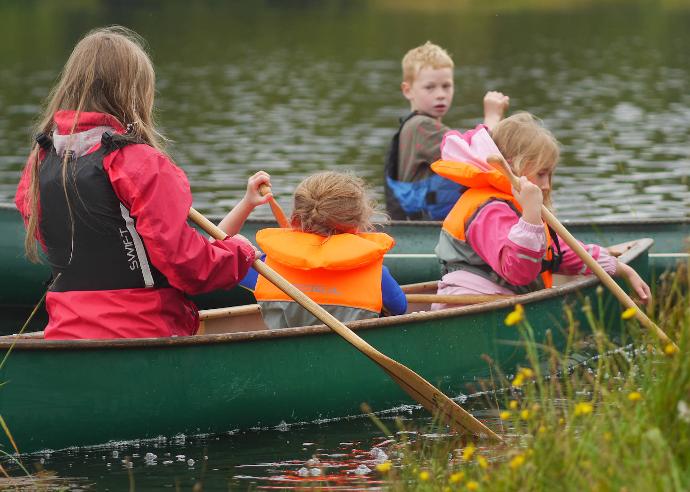
As a rule, good paddle balance is hard to manage with smaller paddlers adapting to boats designed for larger paddlers. Paddles tend to be blade-heavy. Reducing blade size is great for multiple reasons, and reducing blade-weight can help significantly. Of course, beyond a certain point, this puts us into premium paddles.
We can only scale paddles proportionately from young children through teens and smaller adults to larger adults if the boat being paddled (or the distance from the bottom hand to the surface of the water) is also scaled. Comparably proportioned paddlers generally offer a better guide.
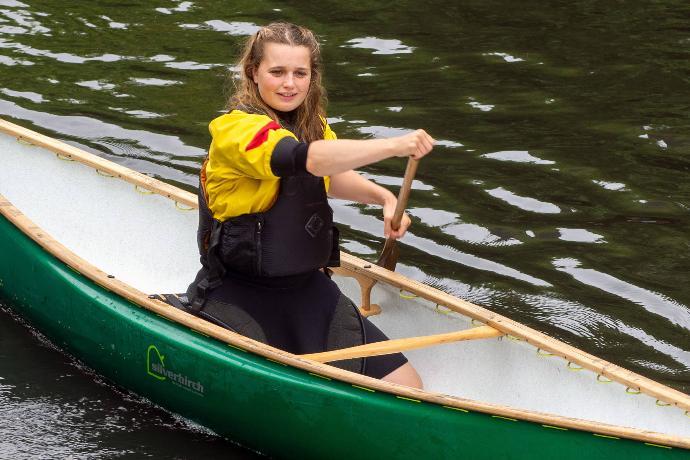
SO WHAT'S THE MAGIC NUMBER?
To work out what paddle to order, we simply add up what we require. For example, we may want:
* Our comfortable hand spacing (e.g. 28” / 71cm)
* Our extra to the top of the blade (e.g. 9” / 23cm)
* Our preferred paddle blade (e.g. 20” / 51cm)
Adding these numbers should give us a paddle length (e.g. 57” / 145cm).
Working out this simple sum works 100% of the time!
What if we walk into a store with a standard 20” / 51cm blade in mind but then fall for a traditional blade that’s 26” / 66cm long? Yup, we just add the extra 6” / 15cm and instead of getting a 57” / 145cm overall length paddle, we get a 63” / 160cm overall length paddle.
Our preferred "extra" paddle-shaft might change as we paddle more, but if we’re sat on a seat, or even kneeling on a thwart, our lower hand is likely to be at least 8” / 20cm clear of the water (and maybe 12” / 30cm if our size relative to our canoe doesn't allow an efficient stroke).
MORE THAN ONE PADDLE?
If we're going to own or carry a spare paddle, we could just go for another that's identically-sized to our primary paddle… but for a variety of reasons, we might choose to go shorter or longer.
One perfectly good reason is because we want a spare paddle that will also work for someone else: a tandem partner, a family member, etc.
Another is for an upwind (smaller) and downwind (larger) paddle.
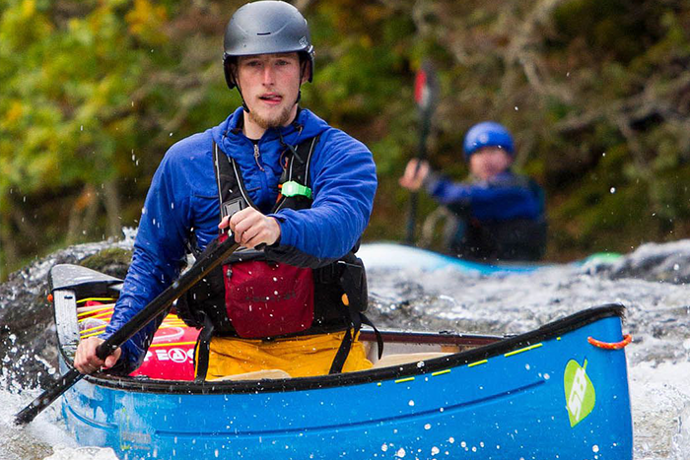
We may also find we prefer a shorter paddle-shaft when we're seated and a slightly longer paddle when kneeling. This is quite commonplace, especially if we rotate less and/or use a bent-shaft paddle when we're seated.
In practice, we can often adjust pretty much seamlessly to a paddle shaft that is slightly different to our "normal" paddle… but nothing really beats trying lots of other people's paddles to find out. Just remember to note the shaft length: the only number that is transferrable to other paddle styles!


Sizing a Canoe Paddle